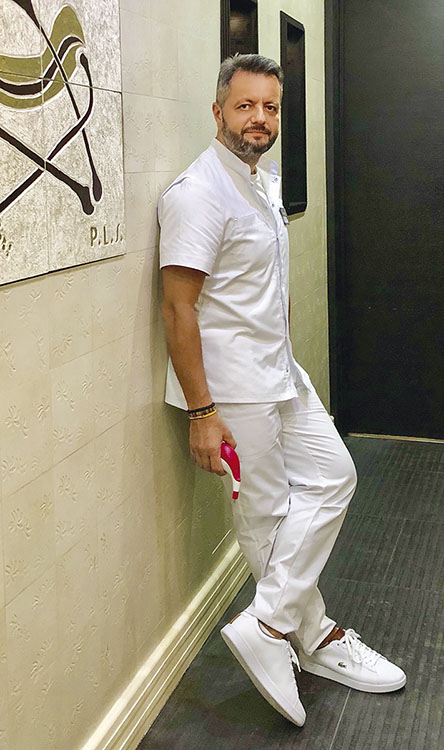
Agree, white teeth are a very important part of our appearance. A beautiful smile makes a good impression, increases a person’s chances for a pleasant acquaintance, sometimes even helps to move up the career ladder and meet your destiny. Isn’t that why more and more people today are making appointments with dentists for teeth whitening? It is true that there are many myths about this technique. Andrei Akulovich, Professor at the Institute of Digital Dentistry of the PFUR, Head of the Centre for Teeth Whitening of Professor Akulovich (Moscow), Candidate of Medical Sciences, will help to understand this.
HOW SHALL WE WHITEN IT?
First, let’s remind you of the basics. All people have thinning enamel as they age and their teeth become a little darker. It’s a natural process. Teeth whitening corrects the situation fairly quickly. Conventional dentists have 16 basic shades of white. And doctors who specialise in the whitening procedure use an extended headset – 29 shades of white. You’ll agree, there’s a lot to choose from! The whole question is what the patient would prefer.
Today, there are several ways to whiten your teeth. The first, safest and most effective, is professional whitening at the dentist’s office.
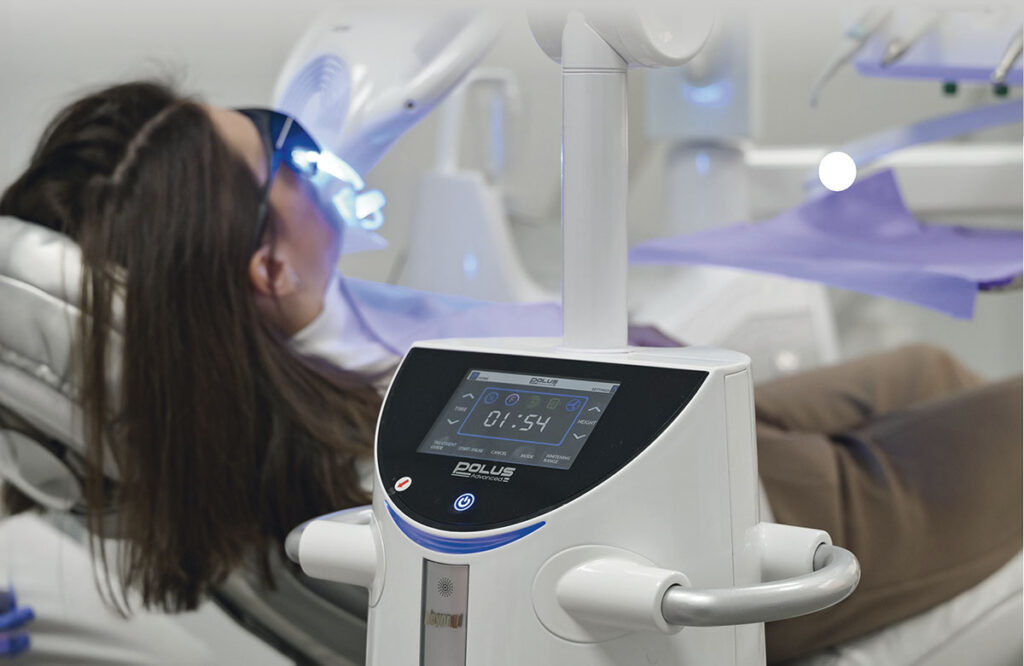
– The lamp method is considered the basic method today: cold-spectrum lamps are used,” says Professor Akulovich. – Its main advantage is that such light practically does not heat the enamel, and therefore does not harm it. The procedure is performed once and lasts from 30 minutes to 1.5 hours. The second method is with the help of pharmacy preparations, at home. But also under the supervision of a specialist.
– The method is used as an afterthought to office, professional whitening,” explains Akulovich. – The patient uses what the doctor has recommended: ready-made mouthguards or those that have been custom-made for him or her, the preparations recommended in this particular case. The course of such procedures is 1-4 weeks.
Often desperate patients themselves buy drugstore remedies – whitening toothpastes, special strips, pencils for whitening teeth – and apply all this at home. Playing the “do-it-yourself dentist” game is usually fruitless, leaving only disappointment.
The whitening effect is very dependent on the type of enamel.But a client will never independently determine whether their type is grey-yellow, yellow or blue.This can only be done by a specialist armed with specialised medical equipment
The third type of whitening – folk remedies. Grandma’s recipes come into play. Safety is out of the question – such procedures will cause significant damage to the enamel of the teeth. The whitening effect is very dependent on the type of enamel. But a client will never independently determine whether their type is grey-yellow, yellow or blue. This can only be done by a specialist armed with specialised medical equipment. The length of the whitening effect depends on the results of the preliminary work.
For example, a yellow shade is whitened best, while patients with a grey-yellow type of enamel will have to spend more time. But for those who have blue enamel type, experts do not recommend whitening at all.
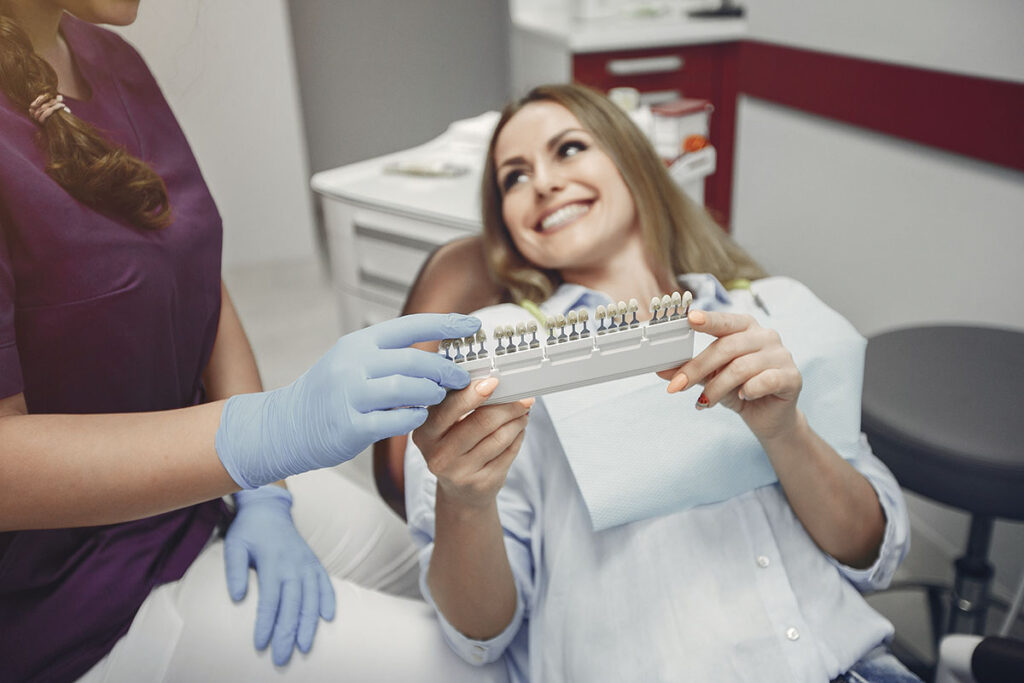
You cannot whiten resorbed teeth either. What it is, knows almost half of the inhabitants of our country. Teeth of red, pink or brown colour – an unpleasant legacy of domestic dentistry of the twentieth century. Abroad they are called Soviet (or Russian). The fact is that it used to be customary to mummify tooth canals that the dentist could not treat with a resorcinformalin mixture, along with the nerves and soft tissues that had failed. By plugging the dental canals, this mixture hardened and became vitreous. After some time, the tooth became reddish in colour, brittle and often caused problems for the patient. Such teeth cannot be whitened today, of course.
So everyone answers the question “how shall we whiten?” for himself. The correct answer, “at the dentist”, is chosen by the most serious people – those who are used to having an opinion. Those who tend to trust the strangers, however, start telling scare stories and myths about professional teeth whitening. It’s time to dispel them with the help of an expert.
MYTH 1
Folk remedies can successfully whiten teeth and will not cause any harm to the body, because there are no chemicals in them – they are natural.
A. A.: – What brave people do not whiten their teeth! In the ranking of folk remedies in the first place is turmeric. Followed by lemon juice and baking soda, citrus peel, activated charcoal, and coconut oil. At the very least it’s inefficient. And as a maximum… After such whitening appear enamel erosion, bleeding gums, increased tooth sensitivity. It can be difficult to correct all of this – teeth suffer both mechanical and chemical trauma. No folk remedy can whiten teeth. Bleaching is a deep treatment of the dentin. Turmeric and lemons have no chance of penetrating the dentin! Those who have decided to whiten teeth with folk remedies, you need to understand: it will not work, in the end you will still have to go to the dentist and treatment. Verdict: Myth!
MYTH 2
Once whitening is done once, the procedure should be repeated regularly.
A. A.: – Yes, it is. You get periodic manicures, pedicures, haircuts and hair colouring – look after yourself. Same with whitening! And you won’t stop eating, drinking coffee, smoking after you whiten your teeth. This means they can become saturated with pigments from the outside environment, darkening, fading or losing their brightness. This applies to all teeth – both whitened teeth and those that have never had professional intervention. After a few years, the procedure can be repeated to add more brightness. There are supportive techniques on how to look after a whiter smile. Verdict: true!
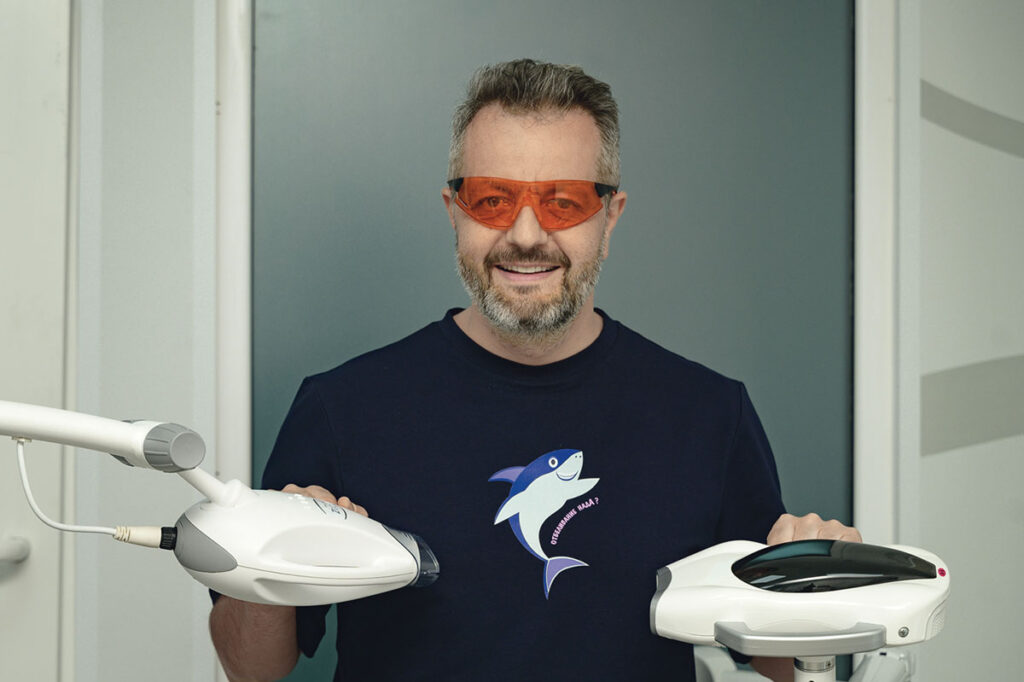
MYTH 3
Professional whitening is very painful. A friend told me that she could barely sit through the whole procedure and her teeth hurt for two more days afterwards.
A. A.: – So the friend came to a clinic that uses outdated equipment, such as tooth warming lamps. Or got to an unskilled dentist who uses aggressive techniques. The whitening procedure is perceived differently by each patient. Some people experience no discomfort and even relax in the dentist’s chair, while others feel slight discomfort with chemical and temperature exposure. In the last ten years, clinics that specialise in the whitening procedure have only used cool-coloured lamps. They do not heat up the tooth, and therefore do not cause pain. Verdict: Myth!
Absolutely all products containing natural dyes affect the colour of enamel in one way or another.And any teeth, bleached or unbleached.From birth!
MYTH 4
After whitening will have to give up many products – tea, coffee, berries, beetroot, different sauces. They will spoil the whiteness and leave dark spots on the enamel. And generally have to be on a “white” diet.
A. A.: – Absolutely all products containing natural dyes, in one way or another affect the colour of enamel. And any teeth, bleached or unbleached. From the day I was born! To avoid the effects on the enamel, we would have to give up such foods from the first milk tooth. I recommend that my patients avoid eating just three foods after their whitening procedure. First: blue and purple berries such as blueberries, for example. But you’re welcome to eat the green ones! Second: coffee. But if the drink is with milk or cream, you’re welcome! And the third is red wine. But there’s a nuance here too: drink it through a straw and it won’t harm your whitened teeth. As you can see, there are no special restrictions. As for the “white” diet, which excludes tea, coffee, chocolate, all berries, carrots, morsels, beetroot, red wine and other pigmented foods, I believe it is an outdated view, a relic of the past. Verdict: Myth!
MYTH 5
Whitening is bad for your teeth
A. A.: – As we know, any useful thing can become harmful. It is the same with whitening: if the procedure is carried out by an untrained specialist, if the doctor uses outdated equipment, if you start whitening your teeth before the age of 18, if you come back for a second appointment not in 9-12 months, as it should be, but as you wish – then yes, all this will be harmful. And if these factors are eliminated, there can be no harm in whitening. Verdict: Myth!
MYTH 6
After whitening, your teeth will look unnaturally white, just like in the adverts displayed on dental clinic websites.
A. A.: – The teeth will look brighter than they were. But there will certainly be no snow-white colour like on advertising posters or photos in glossy magazines. It is impossible to achieve such an effect with office whitening. You need to know how such pictures are taken so that the teeth “before” are ugly and “after” are white.
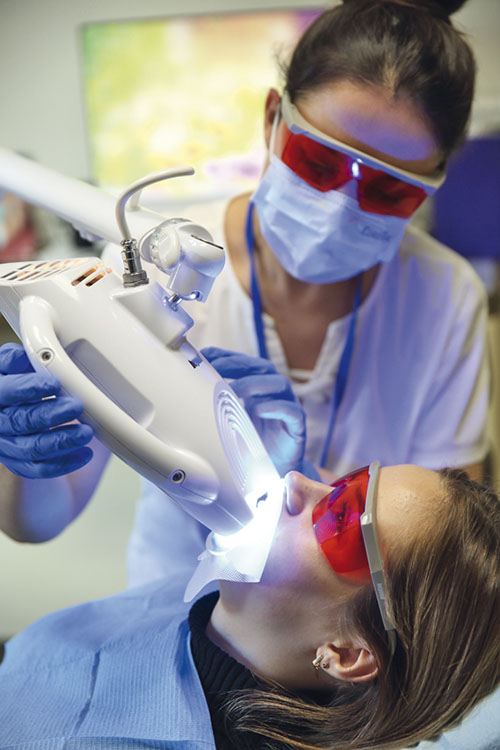
Advertising photographers use filters to get contrasting results. To make the teeth appear darker, the “before” pictures are treated with a warm filter and then the gums and teeth have a yellowish colour. And “after” pictures – with a cold filter, it favourably highlights the whiteness of the teeth, while the gums appear bluish.
The white teeth of film actors are the effect of veneers (special ceramic onlays on the teeth). And on the contrast of “before” and “after” and get such an impressive result. But that doesn’t happen in real life. Verdict: Myth!

